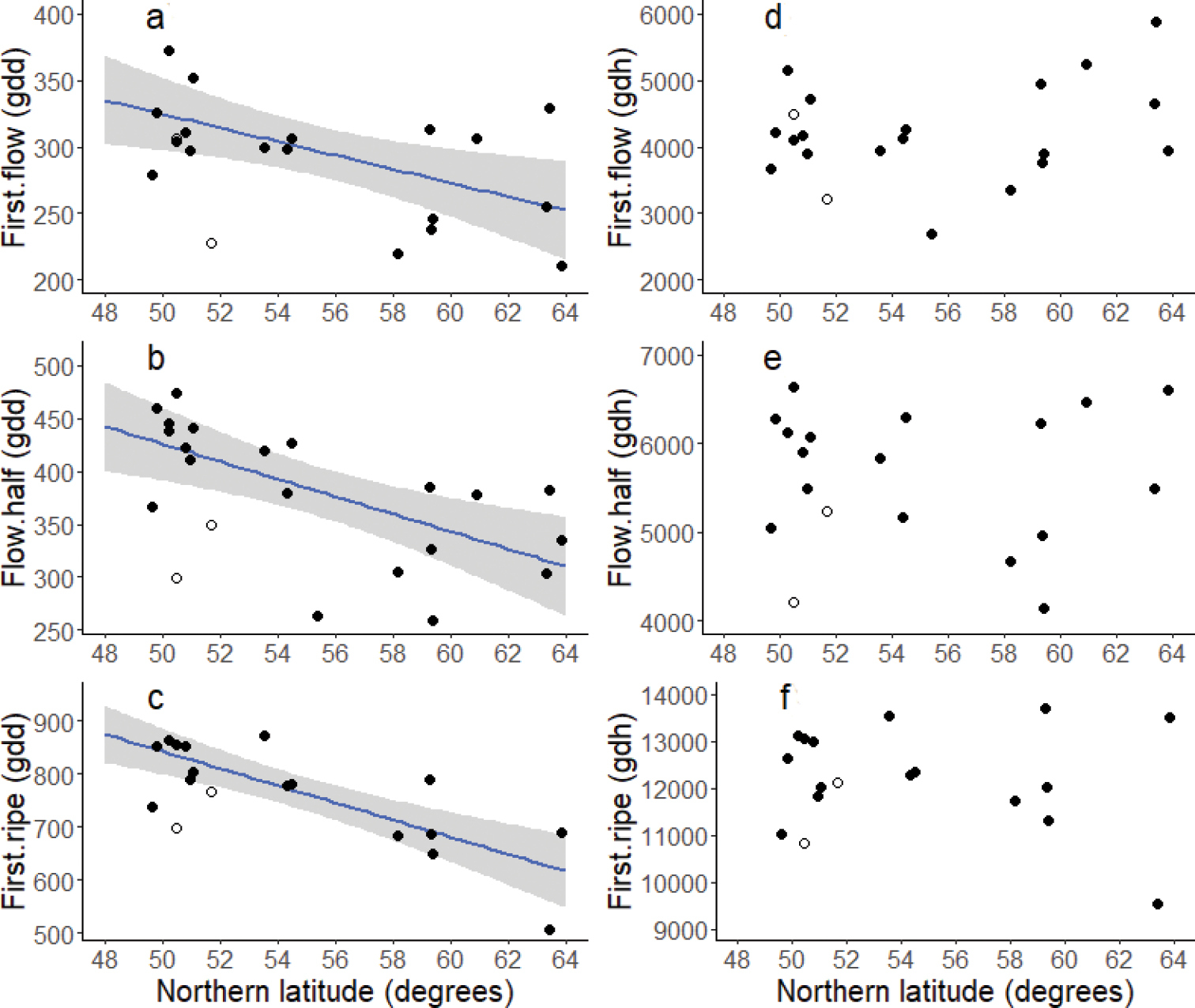
|
||
|
Linear regressions of the accumulated growing degree days (gdd; from January 1, base temperature: 5 °C from weather stations) for each site, until a the first open flower was observed (first.flow) b half of the inflorescence’s length bears open flowers (flow.half) c the first ripe (black) pods were observed (first.ripe), against latitude (°N). Furthermore, linear regressions of the accumulated growing day hours (gdh) for each site, until d the first open flower was observed (first.flow) e half of the inflorescence´s length bears open flowers (flow.half) f the first ripe pod was observed (first.ripe) against latitude (°N). Only the sites in black were included into the model. White symbols are sites of the high altitude, alpine south climatic zone (RHON, SWHA) that were omitted from this analysis and only shown for comparison. Grey areas depict 95% confidence intervals. |